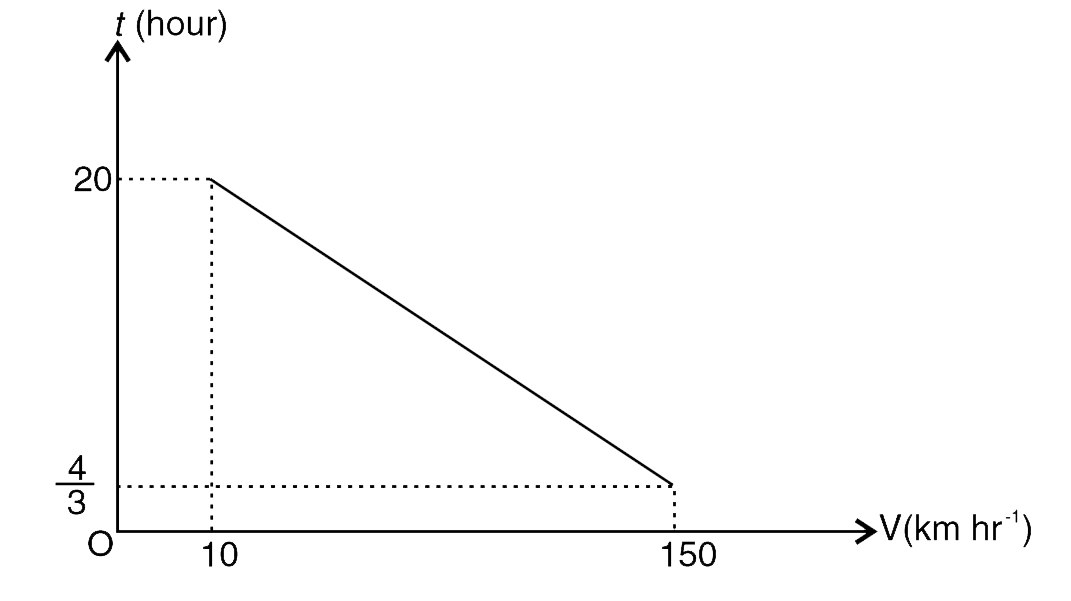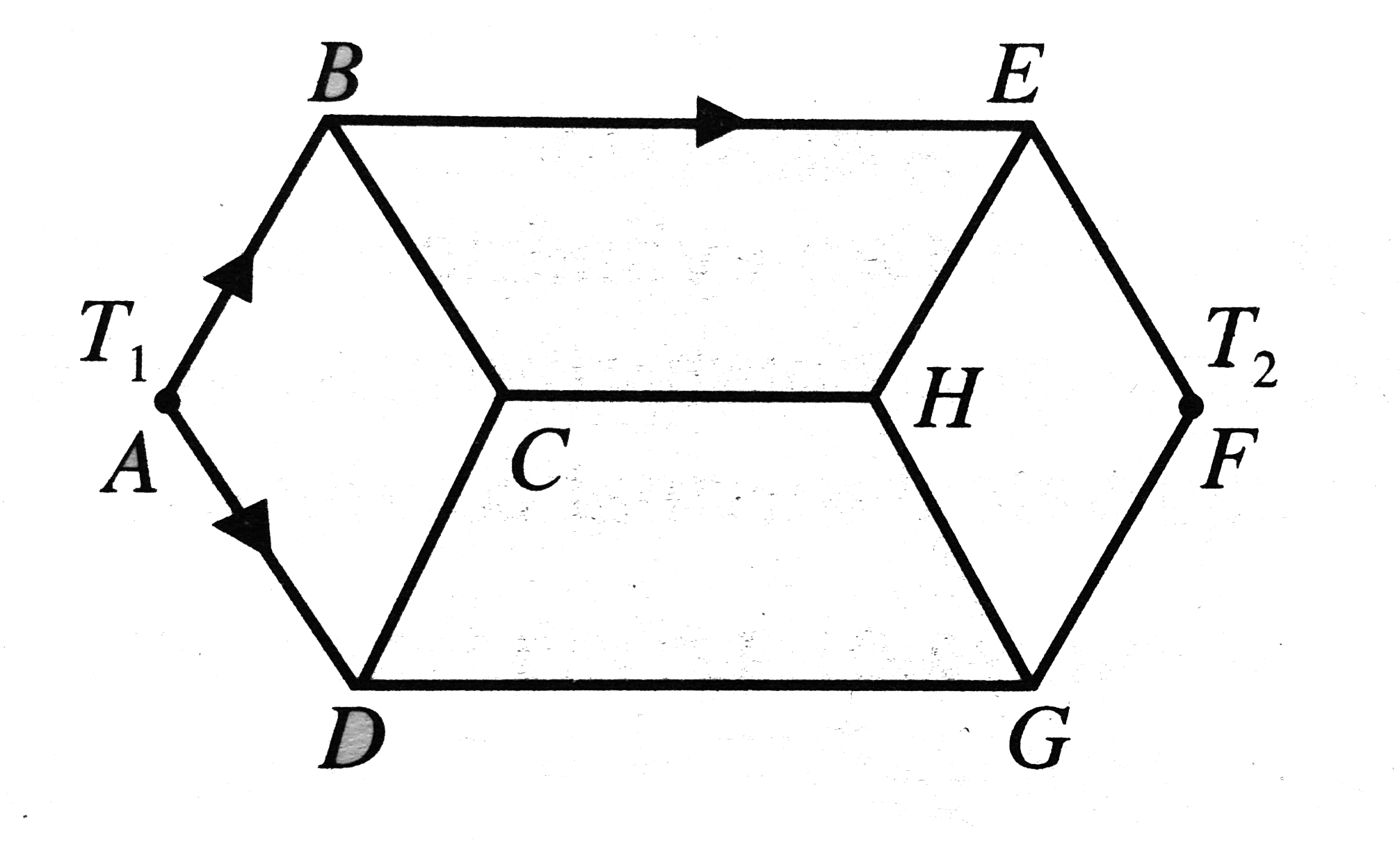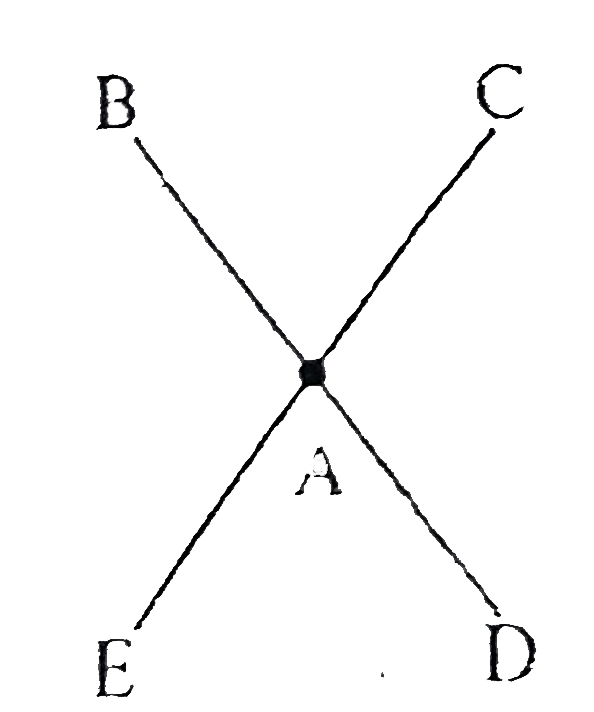Four metal rods each of length L and cross sectional area A are joined at point M. Thermal conductivities of MA, MB and MD are equal and that of MC is thrice that of MA. The end points A, B, C and D are kept in large reservoirs. Heat folws into the junction from B at a rate of P(Js−1) and C from at a rate of 3P. Heat flows out of D at a rate of 5P.
(a) Find the relation between temperatures of points A, B and C.
(b) Find temperature of D if temperature of A and M and TA and TM respectively.

The correct Answer is:(a) TA=TB=TC (b) TD=6TM−5TA
Step by step video, text & image solution for Four metal rods each of length L and cross sectional area A are joined at point M. Thermal conductivities of MA, MB and MD are equal and that of MC is thrice that of MA. The end points A, B, C and D are kept in large reservoirs. Heat folws into the junction from B at a rate of P(Js^(-1)) and C from at a rate of 3P. Heat flows out of D at a rate of 5P. (a) Find the relation between temperatures of points A, B and C. (b) Find temperature of D if temperature of A and M and T_(A) and T_(M) respectively. by Physics experts to help you in doubts & scoring excellent marks in Class 11 exams.
Topper's Solved these Questions
Similar Questions
Two lead balls of mass m and 2 m are placed at a separation d. A third ball of mass m is placed at an unknown location on the line joining the first two balls such that the net gravitational force experienced by the first ball is 6Gm2d2 . What is the location of the third ball?
04:11View SolutionA car manufacturer usually tells a optimum speed (V0) at which the car should be driven to get maximum mileage. In order to find the optimum speed for a new model, an engineer of the car company experimented a lot and finally plotted a graph between the extreme time t (defined as number of hours a tank full of petrol lasts) vs the constant speed V at which car was run.

(a) Calculate the optimum speed V0 for this new model.
(b) If the fuel tank capacity of this car is 50 litre, what maximum mileage can be obtained from this car?View SolutionThree rods each of same length and cross - section are joined in series. The thermal conductivity of the materials are K, 2K and 3K respectively. If one end is kept at 200∘C and the other at 100∘C. What would be the temperature of the junctions in the steady state? Assume that no heat is lost due to radiation from the sides of the rods.
04:42View Solution
Eleven identical rods are arranged as shown in Fig. Each rod has length l, cross sectional area A and thermal conductivity of material L. Ends A and F are maintained at temperatures T1 and T2(<T1), respectively. If lateral surface of each rod is thermally insulated, the rate of heat transfer (dQdt) in each rod isView SolutionSeven identical rods of matrical of thermal conductivity k are connected as shown in All the rod are of identical length l and cross sectional area A if the one end b is kept at 100^(@)C and the other end is kept at 0^(@)C The temperatures of the junctions C,D and E(theta_(D)andtheta_(E)) be in the steady state .
View SolutionIn the following situations, the length and area of cross-section of each rod is same. Find temperature theta at junction of rods. (a) (b) (c ) (d) The thermal conductivity of each rod is K .
06:39View SolutionFour identical rods which have thermally insulated lateral surfaces are joined at point A. Points B,C,D & E are connected to large reservoirs. If heat flows into the junction from point B at rate of 1W and from point C at 3 W inside, flows out from D at 5 w, which relation (s) is//are correct for temperature of these points?
 View Solution
View Solutionसमान अनुप्रस्थ-क्षेत्रफल की तथा एक ही धातु की बनी दो छड़ो A तथा B के एक-एक सिरे 0∘C के बर्फ में रखे है तथा दूसरे क्रमशः 20∘C तथा 30∘C पर स्थिर रखे गए है। छड़ A की लम्बाई छड़ B की लम्बाई की दोगुनी है। ज्ञात कीजिए किस छड़ में ऊष्मीय-चालन की दर अधिक है?
03:23View SolutionTwo rods of the same length L but cross-section in the ratio S_B//S_A =4 are joined at a heater H and a heat sink S as shown. The rate of heat flow to s is found to be R_o If points of A and B at distance L/3 each from H are now joined by a conductor C of length L and the cross-section of C is such that 3c=2S/A, the new rate of heat flow to S will be (See figure)
03:32View SolutionA rod of 1 m length and area of cross-section 1cm2 is connected across two heat reservoirs at temperatures 100∘Cand0∘C as shown. The heat flow per second through the rod in steady state will be [Thermal conductivity of material of rod = 0.09 kilocal m−1s−1(∘C)]
 02:27View Solution
02:27View SolutionTwo metal rods A and B of equal lengths and equal cross- sectional areas are joined end to end. The coefficients of thermal conductivities of A and B are in ratio 2 : 3 , when the free end of A is maintained at 100∘C, free end of B at 0∘C, the temperature of the junction is
02:19View Solution1 meter long and 100cm^(2) Heating of one end of a metal rod with cross section 100^(@)C is. If the heat at the other end of the metal 0^(@)C Is the amount of heat flowing per minute from the rod (the thermal conductivity coefficient of the material of the rod = 100 W / m xx Calvin)
03:03View SolutionConstant temperature of ends are T1 and T2 (where T1>T2) for a conducting rod of 'L' length and cross-sectional area A. What would be the rate of heat transfer in thermal steady state ?
View SolutionThe two ends of a metal rod are maintained at temperatures 100^(@)C and 110^(@)C . The rate of heat flow in the rod is found to be 4.0" Js"^(-1) . If the ends are maintained at temperatures 200^(@)C and 210^(@)C , the rate of heat flow will be :
View SolutionThe end of two rods of different material with their thermal conductivities, area of cross-section and lengths all in the ratio 1 : 2 are maintained at the same temperature difference. If the rate of flow of heat in the first rod is 4 cal/s. Then in the second rod rate of heat flow in cal/s is 8×p. Then p is equal to
08:51View Solution

